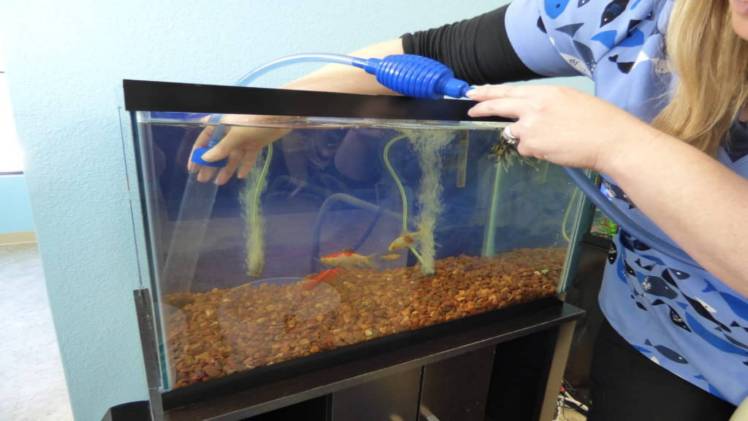Here’s How to Set Up and Clean a Fish Tank

Here’s How to Set Up and Clean Your Fish Tank! You have finally made the decision to buy a fish tank and now you’re ready to begin the exciting journey of keeping your very own pet. You will learn about how to fill your tank with fresh water, how to add nitrifying bacteria, how to change your substrate, and how to monitor water levels. There are several essential things you should know before you begin your adventure.
Filling your aquarium with fresh clean water
Before introducing fish into your aquarium, fill it with fresh, clean water. Fill the tank to a height of one inch above the gravel. You can use a colander or plastic bag to catch the new water. Once the new water has settled, turn on the heater and filter. Within an hour, the sediment and dissolved particles will be trapped by the filter and deposited back into the tank. Keeping this water quality in check will keep your aquarium healthy.More Info About Tamilvilla
The most important step in filling your aquarium is to make sure that the water contains the appropriate minerals. Water that is deionized must be remineralized before it can be added to the aquarium. Distilled water is often a bad choice because it lacks minerals. You can also use spring water. You will need to add remineralization solutions to reverse osmosis water.
Adding nitrifying bacteria
Adding nitrifying bacteria to your fish tank can be a good way to boost the nitrogen-fixing power of your aquarium. However, there are some cautions that you should keep in mind when adding nitrifying bacteria to a fish tank. Because these bacteria do not require constant temperatures to be effective, you can treat them as you would any other type of aquarium product. They can be transported in a car without any special care, but you should keep them out of direct sunlight.
If you plan to introduce fish into the tank before the cycle has been completed, you should wait until the water in the tank is nitrate-free. You can also use bacteria from an already-cycled fish tank to start the process. The bacteria that are in the tank will attach themselves to the gravel. After a week, you can connect the filter to the established aquarium and add the nitrifying bacteria.
Changing your substrate
One of the most important things to do when setting up a fish tank is to change your substrate. Saltwater fish needs a different substrate than freshwater fish. For this reason, it is important to change your substrate at least once a week, and you should make sure that you rinse it well before changing it again. Changing your substrate may also result in dirty water, so don’t do it all at once. Instead, replace half of your tank’s substrate on one day and the other half the next day.
To change your substrate, you must first decide how thick you want your substrate to be. Generally, one pound of substrate is equal to one inch. In addition, it’s important to remember that the thickness of your substrate will vary depending on the type of fish you have and the size of your fish tank. Also, taller tanks require less substrate than smaller tanks. You’ll also need more substrate if you plan on keeping plants and burrowing fish.more movies download jio rockers telugu
Monitoring water levels
There are several methods for monitoring water levels in a fish tank. These methods include using an on-board pressure sensor and an acoustic beam. The former involves sending a short pulse of sound into the water and waiting for it to return. The instrument then converts the amount of time it takes to return to a zero level by measuring the time it takes to bounce back from the surface. The speed of sound in water depends on a variety of factors, including temperature and salinity. Additionally, some instruments include a secondary pressure sensor to serve as a backup measurement in case the original sensor fails to work. Regardless of the type of sensor, it should be calibrated regularly to account for changes in atmospheric conditions.new info here Bad Credit Loans
The two main types of aquarium monitoring systems are manual and automated. Manual systems come with a separate probe and require manual readings and water changes. Some people think the automated systems are the best, as they can measure more parameters than manual systems. These meters can measure pH, pressure, temperature, CO2, and ORP. Some of them also send email alerts if any of the parameters go beyond ideal levels. These meters are designed to detect even the smallest changes in these parameters and can be used by hobbyists or professionals alike.You Get all Info About Fast 9kmovies




